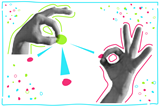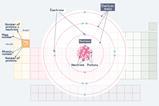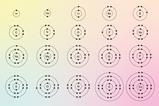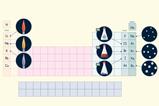The evidence that strategies to link research with practice are working

Teachers teach, researchers research and never the twain shall meet. At least that’s sometimes how it seems. Is it any wonder that teachers have been cynical about education research? They are continually bombarded with fads that disappear as quickly as they arrive, before reappearing again some years later under a different guise.
More recently, it feels like the gap between research and practice is closing. This is partly due to increased engagement with social media. However, few classroom practitioners can immediately implement research ideas. Many individuals and organisations are trying to bridge this gap. For example, the Education Endowment Foundation and Institute for Effective Education launched a research schools network, and Education in Chemistry publishes summaries of research articles with teaching tips. But how do we ensure that education research has a positive impact on teaching quality and student outcomes?
Extracting the essence of good teaching
Multiple international studies have shown that teachers are instrumental for student success. The pathway to becoming an expert teacher is complex. Teachers must develop a range of knowledge bases, skills and competencies. Importantly, they need pedagogical content knowledge (PCK). PCK is the difference between knowing something, and knowing how to help others understand it. PCK includes students’ misconceptions and thought processes, instructional strategies, the curriculum and assessment strategies. Teachers with PCK know what makes a concept tricky to understand, how best to exemplify things, how to explain concepts and how to break down barriers to students’ understanding.
PCK, in other words, is the essence of good teaching. If you could bottle it and administer it to a novice, they would become an expert overnight. If only it were that simple. Whatever their starting point, teachers hit stumbling blocks to developing PCK. Learning from experience is a vital part of their journey.
If we accelerate the transition from novice teacher to expert, we minimise the harm that might be done to students’ learning during those formative stages. Furthermore, clarifying what PCK actually is gives trainee teachers and teacher trainers a better idea of what they are aiming for. And it enables teachers to see their own PCK as it develops. These teachers may be more able to tailor their explanations so more of their students get it, and to design teaching strategies that encourage deeper understanding. This is why, for example, the Early career framework in England encourages PCK development in early career teachers.
But what about those who are already more advanced in the profession? Exposure to education research could support them in enhancing their PCK. In practice, there are many barriers to this, most notably the time needed to read papers and to decode the (entirely justified) educational jargon.
Linking research and practice
To dismantle these barriers, authors are increasingly adding an ‘implications for teaching’ section to their research papers. Evidence-based teaching articles in Education in Chemistry expand on this by providing suggestions for application in the classroom. There is evidence these are leading to engagement with research.
For example, Education in Chemistry published an evidence-based teaching article about triangulation. This summarised Greg Thomas’s research published in the journal Chemistry Education Research and Practice. The journal article highlighted the value of triangulation. This process involves students articulating their interpretations of phenomena at the particulate level. At the same time, students link their interpretation to the macroscopic and symbolic domains of Johnstone’s triangle. It is so important for students to understand how to use sub-microscopic representations effectively, and for teachers to know what students find difficult about them. Therefore the research findings had great potential for boosting PCK, and for supporting more effective classroom practices.
The evidence-based teaching article prompted some teachers to apply Greg Thomas’s research in their practice. Chemistry teacher Niki Kaiser noticed the article about this research in Education in Chemistry. She developed a teaching approach that featured a triangulation framework for students’ conceptual understanding:
Niki Kaiser’s triangulated teaching approach
In my early teaching days, it surprised me that I had to re-explain concepts my classes had previously understood when the context changed. I often wondered why it was so hard for pupils to see connections between things that were obvious to me. An ion will behave similarly whether you’re learning about it in the context of structure and bonding, or when studying electrolysis — an ion’s an ion, right?
It also took me by surprise when pupils couldn’t visualise things the way I did. When I balance equations, for example, I picture the atoms I’m balancing. When I observe a reaction, I’m thinking about how species are interacting. There’s also a bit of me that considers the symbols and equations involved.
Chemists move between conceptual levels routinely. In the above examples, I was linking macroscopic observations with sub-microscopic processes. I routinely represent observations and processes using symbols. As teachers, we have to help our pupils do this fluently too.
This is why I was so interested when I read about triangulation in Education in Chemistry. It helped me make my thought processes explicit, giving me a chemistry-specific way of supporting metacognition with my classes.
I designed a worksheet, based on the original paper, and used it with GCSE and A-level classes. Sometimes I used it as an illustrative tool, and showed pupils how to fill it in. This helped me point out how things were linked, even when connections weren’t immediately apparent. At other times, I allowed pupils to fill it in without my help for processes we covered in lessons. When employing it as an illustrative tool, I anticipated potentially tricky aspects and made sure I referred to them. Letting pupils fill it in without help uncovered misconceptions that might not have otherwise been apparent. Both approaches helped me support my pupils.
Another secondary school teacher, Mike Howard, developed a similar approach after hearing about Johnstone’s triangle at a teachers’ conference at the University of Southampton:
Mike Howard harnesses the triangle’s power
Johnstone’s triangle was introduced to me at a conference three years ago. In a rare spare moment, I read through the relatively short paper and parked the thought. A little later, I was teaching electrolysis to 14–15-year-olds. We spent the first lesson discussing, making notes and watching a video showing the process, before a practical lesson featuring the electrolysis of copper chloride. As an introduction, students were asked to recall what electrolysis was, but the responses were not encouraging. I thought about how to redeem the unfurling disaster, and Johnstone’s triangle represented an interesting possibility.
The terms macroscopic, sub-microscopic and symbolic seemed too abstract to use with pupils, so I simplified them to ‘what you see’ or ‘observations’, ‘explanation’, and ‘symbolic’ or ‘model’. The class drew a triangle and wrote ‘observations’ in the top corner. We logged the formation of copper and chlorine at the electrodes as an observation. Under the bottom left-hand corner, the heading ‘explanations’ referred to ions (ie the sub-microscopic level). The ions were attracted to electrodes and gained or lost electrons to become elements. Finally, students wrote half equations to ‘symbolise’ the changes under the bottom right-hand corner.
The consensus among students was that this provided a simplified strategy to answer exam questions featuring ‘describe’ and ‘explain’. Following this success, I have explored the ‘observation’, ‘explanation’, ‘symbolic’ approach to break down other concepts where linking ideas has been difficult. Using the triangle to attempt three-mark GCSE ‘describe and explain’ questions has increased students’ confidence in planning answers at all levels. Encouraging students to take an idea and break it down to fit the model seems to assist them in processing a concept.
These two experiences demonstrate the value of encouraging evidence-based approaches to teaching. However, despite the benefits they reported, we need further research to quantify the value of these activities to boosting PCK.
In the meantime, perhaps more teachers could be encouraged to adopt similar approaches? Triangulation underpins the understanding of many difficult chemistry concepts, including bonding, kinetic theory and electrochemistry. Supporting students to engage with metacognition — to think about their own thinking — can provide teachers with valuable insights. The insights inform PCK development and develop students’ key knowledge skills. And that’s just one topic in education research … there’s a whole world of education research out there.



















1 Reader's comment